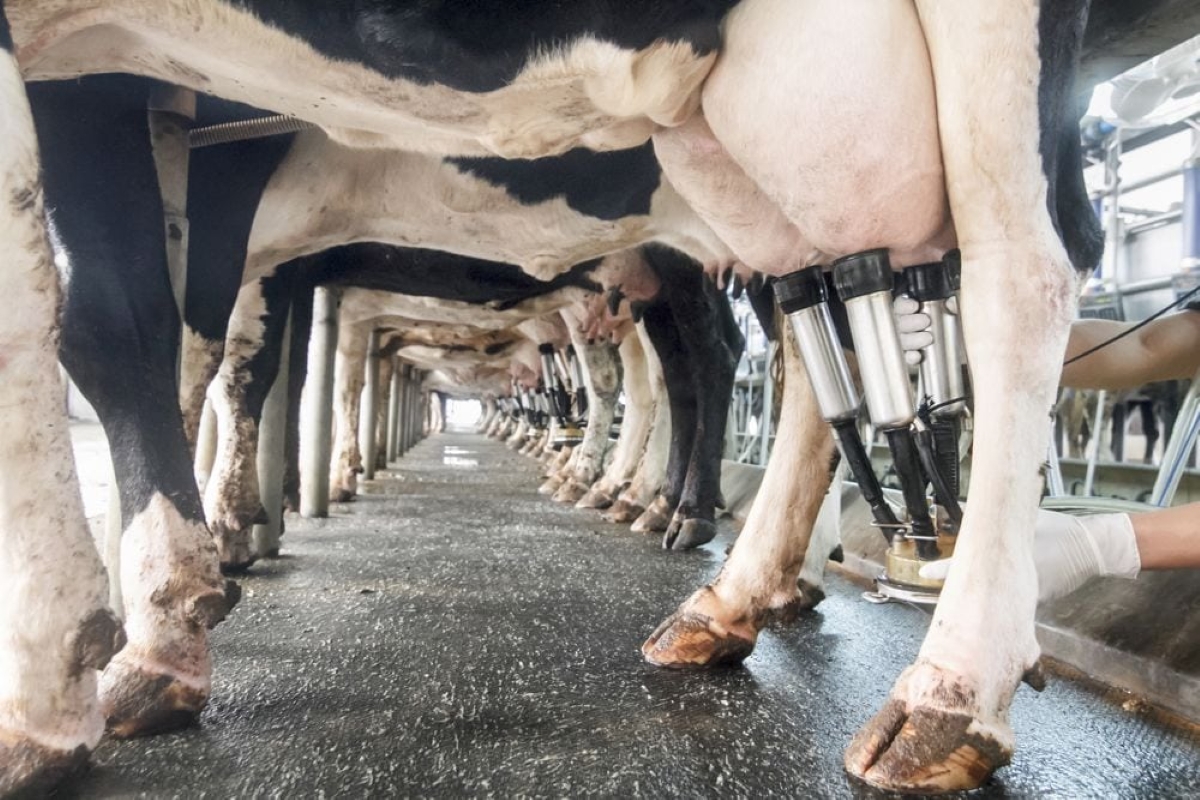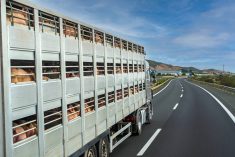The federal government has again expanded its list of ranching areas hit by drought, floods or excess moisture, where producers of breeding livestock may now defer tax on some of their sale income for the 2009 income tax year.
Four counties and a municipal district in Alberta, 68 Saskatchewan rural municipalities, 28 Manitoba RMs, an “unorganized” division in Manitoba and eight census subdivisions in British Columbia were added on Christmas Eve to the previous list of regions where ranchers can defer income tax on livestock sales made due to drought.
Read Also

USDA confirms bird flu case in Wisconsin dairy herd as new wildlife spillover
The United States Department of Agriculture on Friday confirmed that a case of highly pathogenic avian influenza in a Wisconsin dairy herd marked a new spillover event from wildlife to cattle, separate from previous outbreaks.
Also, acting for the first time on legislation that received royal assent just on Dec. 16, the federal government is now able to grant the same deferral option to producers forced to sell livestock due to excess moisture or flooding.
Another 17 Manitoba RMs and three unorganized divisions were added Christmas Eve to a list that previously included four other Manitoba RMs. A list of newly-designated areas appears below.
The tax deferral allows eligible producers in designated areas to defer income tax on the sale of breeding livestock for one year to help replenish breeding stock in the following year.
In cases where a community receives consecutive years of drought designation, producers may defer sales income to the first year in which the area is no longer designated.
Producers who reduced their breeding herds by at least 15 per cent are eligible. Thirty per cent of income from net sales can be deferred if the herd has been reduced by at least 15 per cent, but less than 30 per cent. Where the herd has been reduced by 30 per cent or more, 90 per cent of income from net sales can be deferred.
Eligible producers will be able to request this deferral when filing their 2009 income tax returns, the federal government said.
“These tax deferrals are just another way in which we are working to make sure our livestock producers can remain competitive and profitable.” Agriculture Minister Gerry Ritz said in four separate press releases Thursday.
“A number of regions in Alberta experienced very dry conditions this year,” Alberta’s Agriculture Minister George Groeneveld said in the federal release Thursday. “We continue to monitor soil moisture levels and are watching what is coming next year.”
B.C.’s central interior has also seen very dry conditions since last summer, combined with an extremely low snow accumulation this past winter and continued dry conditions throughout the spring, all leading to “very poor” pasture and forage development, the federal government said.
“B.C.’s Ranching Task Force heard from livestock producers in the Peace Region and Bulkley-Nechako who have been hit particularly hard by drought this year and brought those concerns forward for me to raise with our federal colleagues,” B.C. Agriculture Minister Steve Thomson said Thursday.
West-central Saskatchewan has experienced very dry conditions since last summer, and well-below-normal temperatures and continued dry conditions throughout the spring resulted in very poor pasture and forage development this year, the government said.
While a number of areas in Manitoba saw dry conditions, central Manitoba’s Interlake region, between Lake Winnipeg and Lake Manitoba, went through excessive moisture from the fall of 2008 and got higher-than-normal precipitation throughout the spring. Area producers were thus unable to reseed forages or cut available forage crops.
New designations, Dec. 24
Alberta (drought): Grande Prairie County, Municipal District of Opportunity, Northern Sunrise County, Saddle Hills County and Yellowhead County.
Saskatchewan (drought): The rural municipalities (RMs) of Antler, Aberdeen, Argyle, Blucher, Beaver River, Benson, Brock, Browning, Buchanan, Calder, Clayton, Cana, Coalfields, Churchbridge, Corman Park, Cote, Dundurn, Estevan, Enniskillen, Elcapo, Emerald, Frenchman Butte, Fox Valley, Fertile Belt, Foam Lake, Frontier, Grant, Grayson, Garry, Good Lake, Hazel Dell, Hazelwood, Insinger, Invermay, Kingsley, Keys, Loon Lake, Langenburg, Livingston, Martin, Meota, Mayfield, Maryfield, McLeod, Mervin, Meadow Lake, Moose Creek, Moose Mountain, Moosomin, Mount Pleasant, North Battleford, Orkney, Preeceville, Parkdale, Reciprocity, Rocanville, Stanley, St. Philips, Silverwood, Sliding Hills, Spy Hill, Saltcoats, Storthoaks, Tecumseh, Walpole, Wawken, Wallace and Willowdale.
B.C. (drought): Census subdivisions Bulkley-Nechako B and E; Cariboo H, J and L; and Peace River C, D and E.
Manitoba (drought): The RMs of Albert, Archie, Arthur, Birtle, Brenda, Cameron, Clanwilliam, Edward, Ellice, Harrison, Hillsburg, Miniota, Minitonas, Pipestone, Rossburn, Russell, Shellmouth-Boulton, Shell River, Shoal Lake, Sifton, Silver Creek, Strathclair, Swan River, Wallace, Winchester, Woodworth, Park (North) and Park (South), plus Division No. 20, Unorganized (south part).
Manitoba (excess moisture and floods): The RMs of Brokenhead, Coldwell, Eriksdale, Lac du Bonnet, Lawrence, Mossey River, Rockwood, St. Andrews, St. Clements, St. Laurent, Siglunes, Whitemouth, Woodlands, Alexander, Alonsa, Grahamdale and Reynolds, plus Division No. 18, Unorganized (the east and west parts) and Division No. 19, Unorganized.














